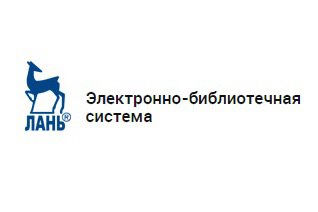| УДК 622.277.6(047.31) | DOI: 10.21440/0536-1028-2019-4-43-54 |
Mislibaev I. T., Zairov Sh. Sh., Soliev B. Z., Norov A. Iu. Study of uranium productive strata destruction by camouflet explosive charge detonation. Izvestiya vysshikh uchebnykh zavedenii. Gornyi zhurnal = News of the Higher Institutions. Mining Journal. 2019; 4: 43–54 (In Russ.). DOI: 10.21440/0536- 1028-2019-4-43-54
Introduction. Despite the undeniable advantages of the underground downhole leaching method (UDL), there is a tendency to increase the cost of mined minerals due to the development and involvement of deep deposits with complex mining-geological and mining-engineering conditions and isolated ore bodies with insignificant mineral content, as well as marginal areas of deposits with high mineral content. The factor that significantly influences the prime cost rise of mineral extraction with UDL method is rise in labour costs and material costs to restore the rating of well achieved during the development as long as it usually decreases as a result of productive strata filter zone colmatage. Due to unsuccessful attempts to unclog strata filter zone with existing methods and means, production wells are usually liquidated and new ones are usually built, which causes significant decrease in profits. Therefore, the substantiation and development of new technologies and technical equipment for production wells operation in order to increase their productivity is a relevant task for mining science and practice.
Research aims to develop the technology and technical equipment unclogging productive strata filter zone by physical action through the use of a camouflet explosive charge.
Methodology includes theoretical research of underground leaching method, analysis and mathematical simulation of the action of camouflet explosive charges in wells.
Results. Decisions have been made on geotechnological uranium wells efficiency improvement by eliminating productive strata colmatage by explosive impact using torpedo charges.
Summary. Based on the theoretical research, a mathematical model has been worked out of cylindrical camouflet charge detonation, describing the fissuring zone in the depth of uranium productive strata. It has been determined that during cylindrical camouflet charge detonation under the influence of shock stress wave and stress wave reflected from the free surface, massif fracture zone is formed at the depth of the productive strata. Based on the laws of elasticity theory, cracking radius in the depth of the uranium productive strata is determined which depends on the radius of the camouflet borehole charge, the coefficient determining the blasting conditions, acoustic rigidity of the array, Poisson ratio and tensile strength of uranium productive strata.
Key words: uranium; geotechnology; underground leaching; strata fracturing; colmatage; ore deposits preparation methods classification; production intensification; torpedoing, fracture zone; explosive impact; explosion load; explosive charge; strata unclogging
REFERENCES
- Pokrovskii G. I., Fedorov I. S. The action of detonation shock in deformable media. Мoscow: Gosstroiizdat Publishing; 1957. (In Russ.)
- Rakishev B. R. Energy content of mechanical disintegration of rock. Almaty: Baspager Publishing; 1998. (In Russ.)
- Atchison T. C., Porter S. J. and Duvall W. I. Comparison of two methods for evaluating explosive performance. Int. Symp. on Mining Research. London: Pergamon Press; 1962:135–146.
- Brawner С. О. Recent lessons that have been learned in open-pit mine stability. Mining Engineering. 1986; 38 (8): 823–830.
- Donzé F. V., Bouchez J., Magnier S. A. Modeling Fractures in Rock Blasting. Int. J. Rock Mech. Min. Sci. 1997; 34(8): 1153–1163.
- Maerz N. H. Reconstructing 3-D block size distributions from 2-D measurements on sections. In: Proc. ISRM. N.H. Maerz. Fragblast 5 Workshop and Short Course on Fragmentation Measurement. Montreal: A. A. Balkema Publishing; 1996. P. 39–43.
- Maerz N. H., Palangio T. C., Franklin J. A. Wip Frag Image Based Granulometry System. In: Proc. of the FRAGBLAST5 Workshop on Measurement of Blast Fragmentation. Montreal, Quebec, Canada, 1996. P. 91–99.
- Munjiza A., Owen R. J., Bianic N. A Combined Finite-discrete Element Method in Transient Dynamics of Fracturing Solids. Computations. 1995; 12: 145–174.
- Pears О. Е. Rock Blasting. Some aspects on the theory and practice. Mine and Quarry Eng. 1985; 21 (1): 25–30.
- Rustan A. Spacing and Borehole Diameter at Rock Blasting. In: 3rd Int. Symp. on Rock Frequentation by Blasting. Brisbane, 1990. P. 303–310.
- Selberg H. L. Transient compression waves from spherical and cylindrical cavities. Archive for physics. 1995; Band 5; 7: 307–314.
- Rodionov V. N. et al. Mechanic effect from underground detonation. Moscow: Nedra Publishing; 1971. (In Russ.)
- Rakishev B. R. Forecasting technological parameters of exploded rock at wells. Alma-Ata: Nauka Publishing; 1983. (In Russ.)
- Kutuzov B. N., Rubtsov V. K. Physics of rock blasting destruction as applied to blasting operations. Vzryvnoe delo = Explosion Technology. 1963; 53/10: 31–36. (In Russ.)
- Belenko F. A. Study of stress fields and the process of fissuring during column charges explosion in hard rock. In: Theory of rock breaking under the action of a blast. Moscow; 1958: 126–139. (In Russ.)
- Zhigur L. Iu., Mezin A. I. Investigating the mechanism of explosive loading of rock in the zone of undercharging in a well. Vzryvnoe delo = Explosion Technology. 1984; 86/43: 221–225. (In Russ.)
- Mosinets V. N. Crushing and seismic effect from a blast in rock. Moscow: Nedra Publishing; 1976. (In Russ.)









